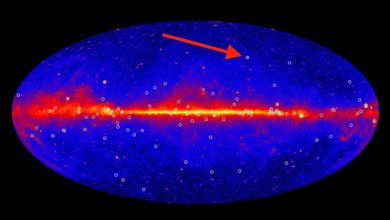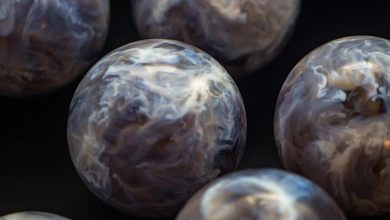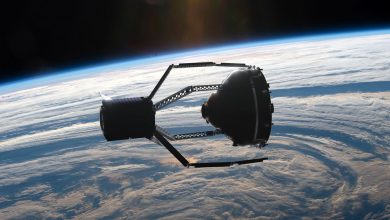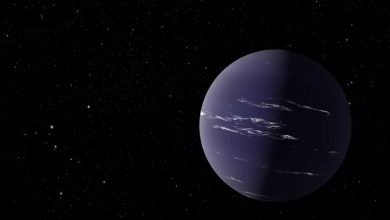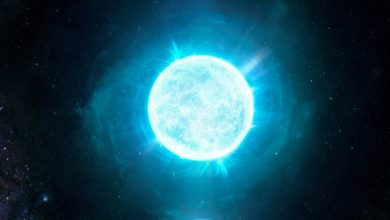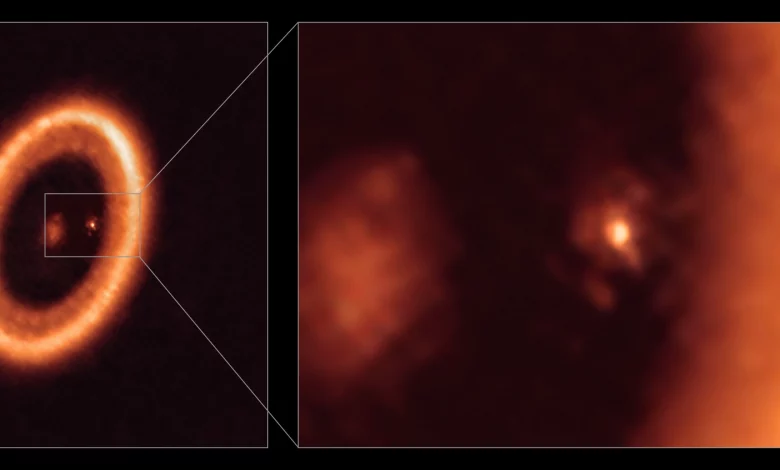
Lead image: zoomed out and close-up views of PDS 70c’s moon-forming disc as seen with ALMA. The bright colouring surrounding PDS 70c is dust in the planet’s CPD Credit: ALMA (ESO/NAOJ/NRAO)/Benisty et al.
In recently published research using the Atacama Large Millimeter/submillimeter Array (ALMA), astronomers announced that they had found the first clear detection of a circumplanetary, moon-forming disk surrounding the exoplanet PDS 70c — a first in astrophysics.
The circumplanetary disk, or CPD, has been seen in past research from other groups. However, due to the inability to tell the disk apart from its surrounding environment, the presence of the disk around PDS 70c could not be confirmed, until now.
The CPD in question surrounds PDS 70c, a young exoplanet orbiting PDS 70, a 10 million-year-old K5 spectral type, low-mass T-Tauri star located 360 light-years away in the constellation Centaurus.
PDS 70c is one of two young, Jupiter-like planets currently orbiting PDS 70. Discovered in 2019 using the Very Large Telescope’s (VLT) Multi Unit Spectroscopic Explorer (MUSE), PDS 70c is thought to have a mass of two Jupiters and orbits at a distance of 34 AU from its star. The other planet, PDS 70b, is similar in size to PDS 70c, although it orbits closer to the parent star.
Circumplanetary disks, like circumstellar disks, are the birthplaces of natural satellites such as moons and other small rocky bodies. CPDs consist of various rock, gas, and other material that can “clump” together to form planetary bodies. Additionally, CPDs regulate the amount of material that falls onto a newly forming planet like PDS 70c.
Using data collected from their observations of PDS 70c and its CPD, a team of astronomers, led by Dr. Myriam Benisty of the University of Grenoble and the University of Chile, were able to determine that the CPD has enough mass to form three satellites the size of Earth’s moon.
But how exactly could these natural satellites form, when could we see them, and how?
To answer these questions, NASASpaceflight sat down with Dr. Stefano Facchini, ESO Fellow and co-author of the study.
“So far, the only system where two planets have been directly detected as they are growing and forming is PDS 70. Which is a young star, very similar to what the sun used to be when it was young. So these two planets are very massive,” said Dr. Facchini.
“What happened is, a couple of years ago, our team realized through an image of this system, taken by the ALMA facility, that there was some cold dust emission around one of these planets, planet c, PDS 70c. And so what we did recently was ask for a lot more telescope time at even higher angular resolution, so with better detail, to really see if there was a point source emission or some emission of dust where planet c is.”
At first, Benisty et al. were skeptical of the image they received from the telescope, but then they realized the image truly showed a point source emission. And that’s where the fun started.
1/ Astronomers made the first clear detection of a moon-forming disc around an exoplanet, using @ALMAObs , in which ESO is a partner.
🔗https://t.co/LjoIaSoBlR
Credit: ALMA (ESO/NAOJ/NRAO)/Benisty et al. pic.twitter.com/4ybtQJ6myt— ESO (@ESO) July 22, 2021
“What happened is that an astonishing image came out of this new data, where we realized that this point source emission was real because there was some skepticism in the community. But instead, we realized it was real. And why is it so important? Because this would be, and is, the first direct image or detection of material of dust that is orbiting a growing planet,” Dr. Facchini said. “So we targeted this system because it’s the best system known to date in the sky to really see planet and moon formation in the act.”
“And in this dust, we think moons are forming.”
However, to have the data to analyze, the team first had to get it from somewhere. For Benisty et al., that location was the Atacama Large Millimeter/submillimeter Array (ALMA) telescope located in the Atacama Desert in northern Chile. ALMA is an astronomical interferometer consisting of 66 total radio telescopes/antennas. The telescope operates at wavelengths of 3.6 to 0.32 millimeters and is extremely sensitive. It has been instrumental in supporting some of the greatest astrophysics science throughout the past decade.
“[The antennas] operate in millimeter wavelength range, so not in the visible light but in longer wavelengths which cannot be picked up by the human eye but can be picked up by instruments,” Dr. Facchini said.
“So we have this array of antennas. We have 66; we [used] about 45 for these observations. And the way we use it, and the way this facility operates is that we can combine the light from the different telescopes, these different antennas, and we can play a game or use some mathematics to combine the light from these antennas in a smart way, in such a way that the angular resolution we obtain is the same as if we had a huge telescope with a diameter that is equal to the distance between the two farthest antennas we have.”
“So, the bigger the mirror, the better resolution you have.”
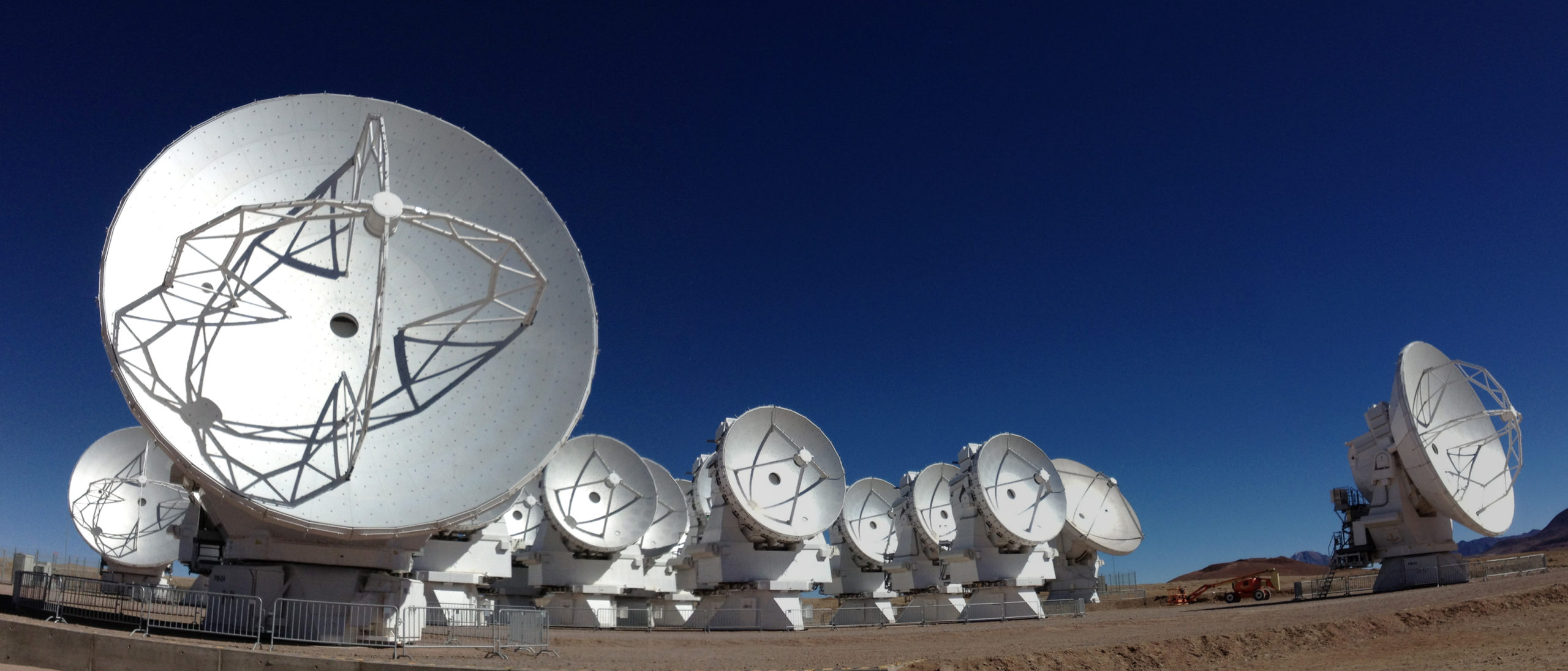
Hence why 45 antennas were needed to collect enough information for analysis. With the farthest distance between two antennas being approximately 8 km, Benisty et al. were basically working with an 8 km wide mirror.
“We use the telescope in this way, and in particular, in this study, we used it to probe what we call the continuum emission. It’s the emission that the cold dust emits thermally. Just because it’s cold, it’s like at -250° Celsius, it emits a thermal emission at millimeter or submillimeter wavelengths. And so we used this telescope to observe the emission from these small dust grains [in the CPD].”
With the right telescope, the team was able to collect astonishing data on the PDS 70 system and PDS 70c itself, mainly its CPD. As data were collected and analysis ensued, Benisty et al. were able to clearly detect a CPD around PDS 70c — the first time a CPD was confirmed around a body outside of our solar system.
So if CPDs are thought to be the birthplaces of natural satellites around planets, could moons form around PDS 70c from its CPD?
“The honest answer is, from a theoretical point of view, we think moons around PDS 70c can form from what theory tells us,” Dr. Facchini said.
When looking at the planet and the disk further, PDS 70c’s CPD is a late-stage disk.
“So what we think is that when there is a massive planet such as Jupiter, Jupiter carves a gap in the disk where it’s harbored. It carves a huge gap in the density. So it removes gas and dust from its vicinity, its orbit. But still, some gas and dust can go towards the planet. As the gas approaches, it starts orbiting around the planet and forms a small disk, which we call a circumplanetary disk around the planet.”
“In this circumplanetary disk somehow, there’s a lot of dust collected,” Dr. Facchini said. “And this dust coagulates fairly quickly and forms moons. And that’s the dust we saw in this measurement.”
“There are still challenges from a theoretical point of view, but what we know is that these moons should be forming at what we call ‘late stages,’ when the planet is not accreting too much gas anymore. And that’s exactly what we see with PDS 70c. It’s still accreting some gas, but not too much. We see the dust around it, so from what we know, this planet could be forming moons. And likely, it is.”
When looking at conditions for moon formation in a CPD, temperature is a big factor. In Benisty et al.’s paper, the team goes into depth on the estimated temperature inside PDS 70c’s CPD. So what could certain temperatures or temperature fluctuations in the CPD mean for moon formation?
“We think the temperature can have a big effect. The disk has to be fairly cold to be able to form moons. That’s why I said we’re in the late stage of the CPD evolution, meaning that it’s cold. If it’s too hot, the disk… the CPD wouldn’t be a disk; it would be basically a crazy hot sphere-like thing orbiting around the planet. And the pressure there would be so crazy high that it would really struggle to form any moon,” said Dr. Facchini.
“In that case, what would happen is that the accretion gas going onto the planet is very high. You have a lot of material falling in. The planet would release a lot of energy. So the potential energy of the material falling onto the planet would be basically converted into radiation and temperature. And this would heat up the CPD so much that it would be a hot, warm sphere.”
“So we need this temperature to be low enough that an actual disk can form around the planet. So these temperatures are important.”
Understanding this theory and where PDS 70c is in its development, the team was able to develop a general idea as to where current moon development is based on CPD conditions. Additionally, the team was able to gain an idea of what the moons’ chemical composition could be.
“So we think, now, we have passed the phase… the big sphere phase. We’re over it. That’s what we think. So again, the temperature is cold enough that we think we’re good,” Dr. Facchini said.
“Also the chemical composition of the moons would be affected by the temperature of the CPD. So that’s also an interesting aspect that we’re working on as a team, to study the chemical environment of the whole PDS 70 system.”
During accretion, cosmic dust, gas, and rock are pulled into a forming planet, galaxy, or star — allowing it to grow and increase its mass. When accreting, planets typically pull this cosmic dust material from their CPDs. Earlier this year, PDS 70b’s accretion growth rate was measure using UV light for the first time.
If PDS 70c is no longer undergoing rapid accretion, the material in its CPD could possibly begin to form moons. However, like most other observational situations such as these, it can’t be confirmed without evidence.
“That would be the final proof that there are moons being formed in there. So can we see it? The honest answer is that it is extremely challenging, and I’m not sure we’ll ever see a moon around PDS 70c,” said Dr. Facchini.
“Also because… if moons are forming, it may take, you know, hundreds of thousands of years to form, so we would need to wait quite a long time to see that happening.”
However, if PDS 70c were to fully stop accreting, would the dust, gas, and other cosmic material in PDS 70c’s CPD begin to form moons, or would the material freely float into space as gases subside?
“So we think that, theoretically, the formation of moons actually needs the gas.”
“What happens is… there is some weird hydrodynamic effect that leads these pebbles to form — what we call planetesimals. So there are big rocks of like 100 km in size. In the case of a CPD, these would be satellitesimals. And in order for this to happen, we need the gas because we need these hydrodynamic effects to collect the dust into the planetesimals.”
“So the gas is needed for what we think is happening.”
However, these pebbles could do something quite unexpected based on Benisty et al.’s models and theories.
“These dust pebbles, once they reach the CPD, the theory predicts they could spiral inwards very quickly onto the planet. So fast that it wouldn’t have any time to form anything,” Dr. Facchini said. “But still we see moons everywhere. Jupiter and Saturn have, like, 80 moons roughly. More if you sum them up.”
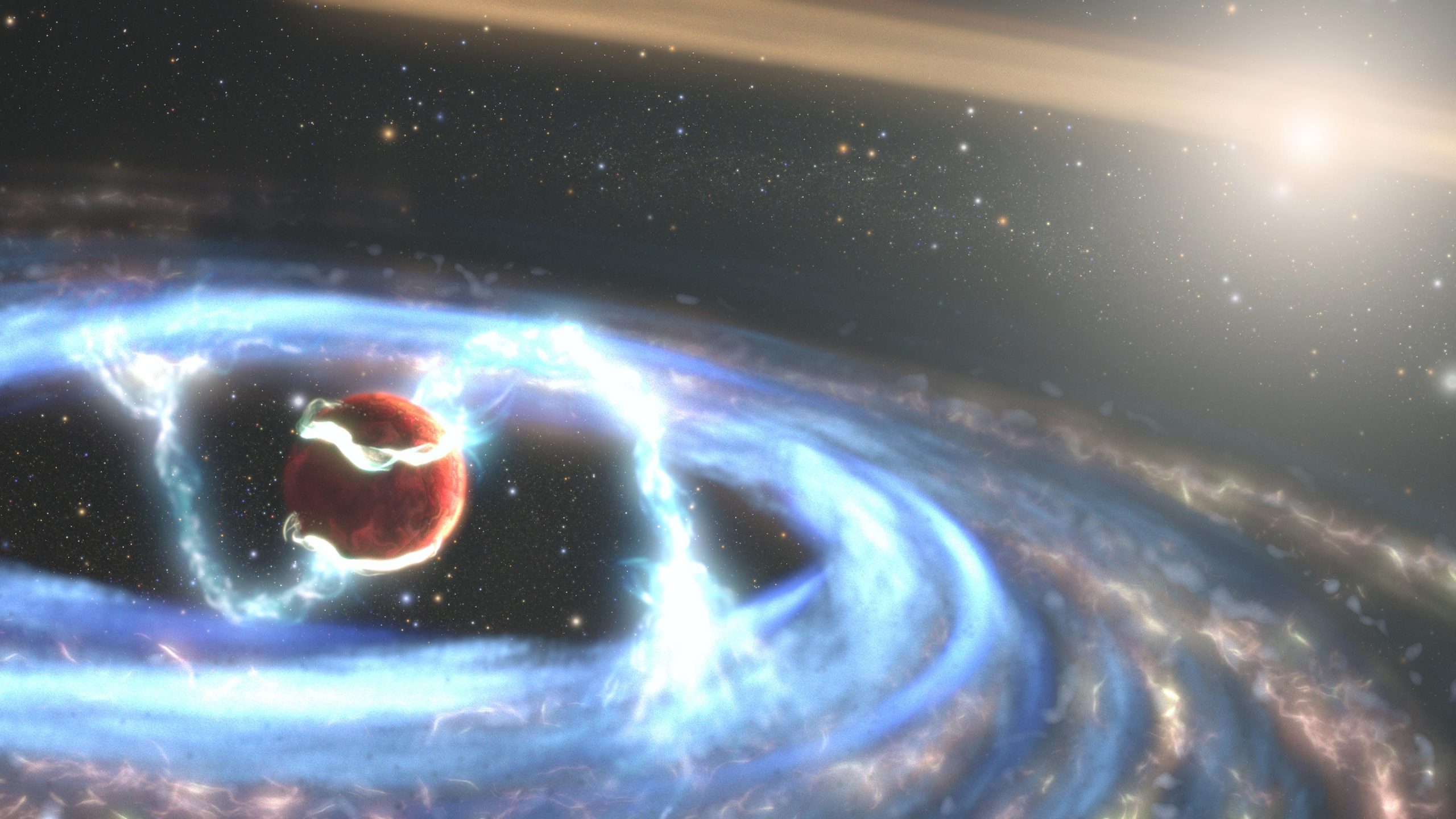
“So we know that this process has to be very efficient. And we see a CPD around PDS 70c. That’s why it’s such an important discovery. We have the first observational proof that it exists.”
When planets like PDS 70b and c form, they can pull in matter from the circumstellar disk they formed from into their own circumplanetary disk. This process creates cavities, or gaps, in the star’s circumstellar disk where the planet is orbiting.
This same idea can be applied to moon or satellitesimal formation inside of a planet’s CPD.
“We think that if a moon is massive enough, it will create a cavity,” said Dr. Facchini. “And that’s something we see now with recent observations. We see it very often around protoplanetary disks. We think that when we see a lot of them, we call them annuli. So there are concentric rings and gaps.”
Knowing what planetary bodies can do to circumstellar disks, astronomers believe that a large majority of gaps in disks are likely caused by planets. “What we think is that at least some of them, but probably the large majority of them, are caused by embedded planets that create these rings and gaps in the density structure. We think that exactly the same would happen with a moon around a planet.”
Additionally, if a moon or satellitesimal was to form, it would likely push the CPD ring out farther than the moon’s orbit.
“What people suggest is that, for example, once you form the first moon in the system, and the moon is orbiting, you create rings outside its orbit. And that helps with retaining a lot of dust. So maybe the dust we’re seeing with this new image, if you could zoom in even better, maybe 100 years from now we’ll have some facility able to do it, maybe we would be able to see rings and gaps and count how many exomoons are around the planet.”
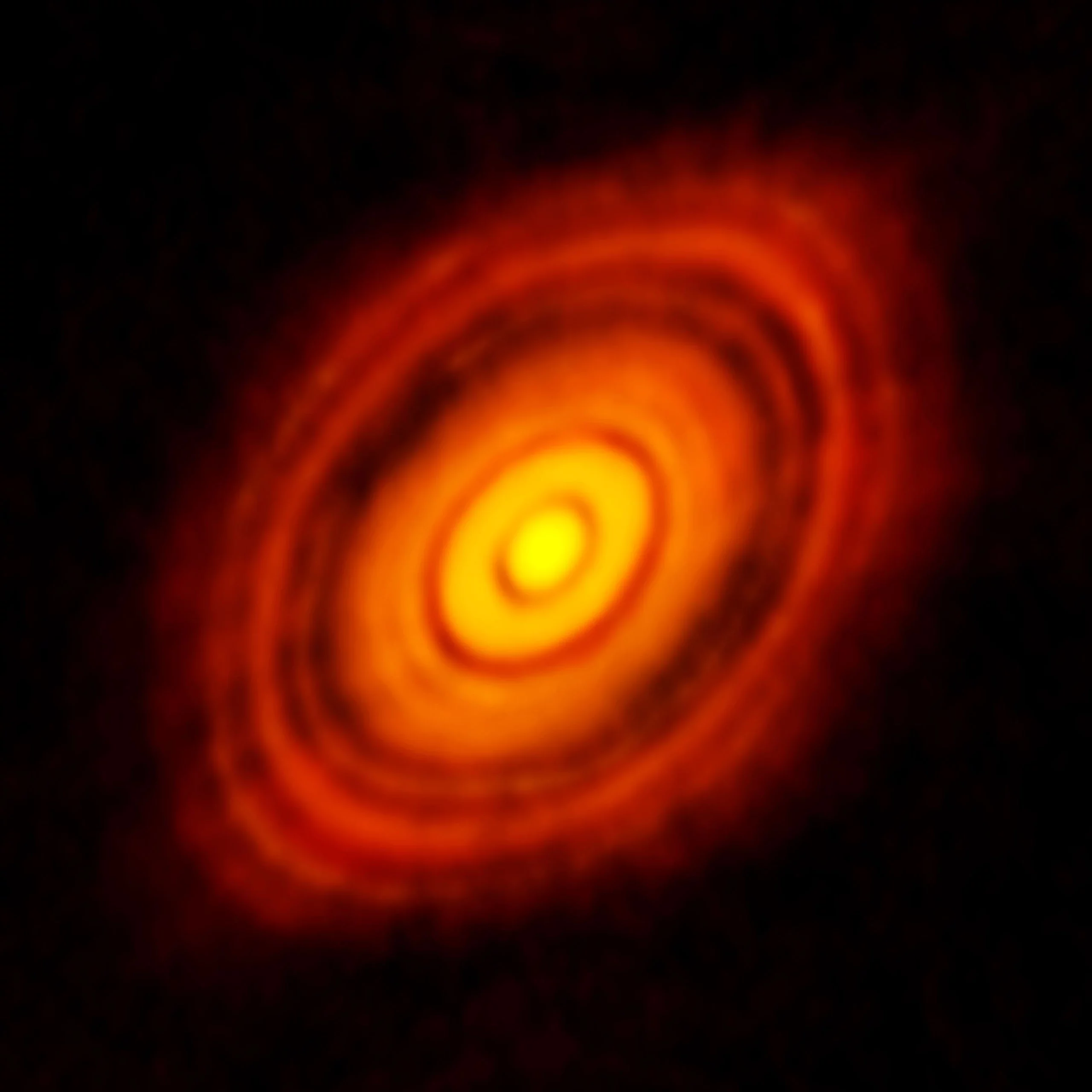
However, knowing that planets can create significant gaps in a star’s disk, would the added mass, or presence, of a moon around a planet increase the gap in the star’s circumstellar disk? “The answer is yes, in the sense that these planets had to start from somewhere,” Dr. Facchini said. “They didn’t have a lot of mass in the beginning.”
“You start with sand-like dust and very low-density gas. So, at some point, you have a seed of a few Earth masses of rock, probably. And then if you accrete a lot of gas, you create a giant planet, like [PDS 70c]. If you keep adding mass to the system, to the planet itself, or with a moon or with different moons or with the CPD even… as the planet plus moons plus CPD system grows in mass, this has an effect on the circumstellar disk.”
To this end, while the formation, sustainability, and long-term presence of a moon around PDS 70c is a subject that requires needs further study, the known presence of a CPD around the exoplanet helps push the idea of moon-formation forward.
Benisty et al.’s research was published in The Astrophysical Journal Letters in July 2021.

